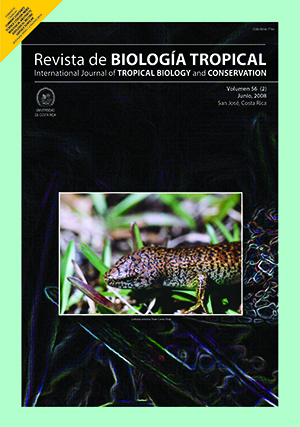Resumen
En la Reserva Forestal de Cogua (Colombia), estudiamos mediante transectos la vegetación leñosa en dos parches de bosque altoandino para tres tipos de borde: chusque, paramizado y antiguo (este último denominado así por presentar un estado sucesional más avanzado). Seleccionamos como especies típicas de borde las que tenían mayor abundancia en esta zona, presentes en ambos parches del borde y capaces de colonizar la matriz adyacente. Se obtuvo un conjunto de nueve especies a las cuales se les evaluaron 20 atributos vitales, generando seis grupos mediante un análisis de agrupamiento (cluster): 1) Weinmannia balbisiana-W. tomentosa, 2) Gaiadendron punctatum-Hedyosmum bonplandianum, 3) Miconia ligustrina-M. squamulosa, 4) Macleania rupestris, 5) Pentacalia pulchella y 6) Tibouchina grossa. La amplia variación y plasticidad de las especies estudiadas en cuanto a los atributos analizados, conduce a pensar que los conjuntos obtenidos no obedecen a grupos funcionales claramente diferenciados, sino más bien a estrategias diferentes y que estas especies podrían hacer parte de un solo grupo funcional de gran plasticidad. T. grossa es la especie de borde más exitosa en la reserva, dados sus altos valores de abundancia, tolerancia fisiológica, reproducción vegetativa, producción de hojarasca y producción de semillas pequeñas, numerosas, formadoras de un banco de semillas persistente que evidencian su alta fecundidad.##plugins.facebook.comentarios##

Esta obra está bajo una licencia internacional Creative Commons Atribución 4.0.
Derechos de autor 2008 Revista de Biología Tropical
Descargas
Los datos de descargas todavía no están disponibles.






